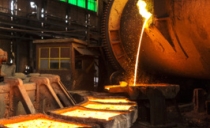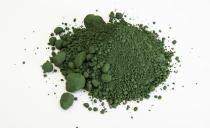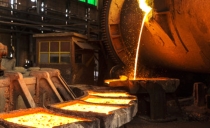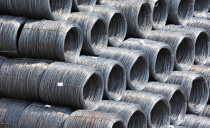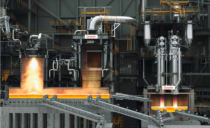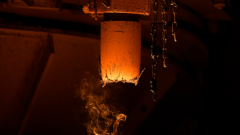
Chromium Oxide: What it is & Where it’s Used
Chromium oxide (Cr2O3), sometimes referred to as chromia, is a specialist material commonly used as one of the chief alloying elements in certain aluminium oxide (Al2O3) and zirconium dioxide (ZrO2) ceramics, imparting greater dynamic performance in challenging high-temperature processes. Saint-Gobain Performance Ceramics & Refractories provides chromium Oxide based refractories.
Chromium Oxide - Chemistry & Microstructure
Chromium oxide is an inorganic compound that occurs naturally in eskolaite; a rare mineral with a trigonal crystal structure analogous to that of corundum (crystallized alumina). Owing to its scarcity in nature, chromium oxide is typically derived from the reduction-oxidation (redox) reaction of sodium dichromate with sulfur at elevated temperatures. This yields a fine ceramic additive with a close-packed hexagonal structure which is - again - analogous to that of alumina.
High-purity chromium oxide is practically insoluble and has an extremely high thermal stability, while it is unaffected by redoy reactions. There combined properties make it inherently resistant to corrosion thus an extremely valuable additive for high-temperature ceramics.
Chromium Oxide’s Key Applications
The outstanding thermal stability, plus the inherent corrosion and wear resistance of chromium oxide, make it an ideal ceramic for extreme processing environments associated with dirty atmospheres and high temperatures, such as the solid gasification of biomass or coal. Chromium oxide suppliers often provide solutions non-ferrous metallurgy applications, including fused cast refractory Cr2O3 for primary copper and zinc processing. It is predominantly used in flash melters, converting furnaces, slag cleaning furnaces, smelting furnaces, and for tap hole constructions.
Looking for Chromium Oxide Products?
Saint-Gobain is one of the world’s leading suppliers of chromium oxide based refractories, manufacturing a range of grades using a choice of bonding and forming techniques. The manufacturing process determines the ratios of additive elements, for instance, oxide-bonded chromium oxide and alumina is formed via blending, casting, or pressing.
Our magnesium oxide (MgO) is pressed with chromia to give oxide-bonded magnesia-chrome. We specialise in the unique chemistries of technical ceramics and can supply Cr2O3 ceramics in their most common alloyed formats (i.e. with alumina or zirconium-based additives), with novel chemistries, or in high-purity formats in the cast and fused conditions. Among our product offering is C104, the only fusion cast chrome-magnesia solution on the market. It offers superb corrosion and erosion resistance by virtue of the interlocking crystalline structure formed by electrically melting magnesite and chrome ore at temperatures in the region of 2,400°C. This special composition also allows for greater high temperature stability and extreme resistance to thermomechanical reactions compared with conventional bonded refractories. By extending furnace life and minimising rebuild and maintenance costs, C104 is ideal for implementation into nonferrous applications where manufacturers are leaning into the ecological transition.
If you would like to learn more, contact us to learn how to utilize the refractory in your application.
Related Content
Primary and Secondary Copper Furnaces
Refractory materials from Saint-Gobain Performance Ceramics & Refractories offer excellent performance and extended service life in the most critical...
Chromium Oxide (Cr2O3)
Saint-Gobain is a supplier of Chromium Oxide ceramics, often used as a refractory material.
Primary Copper
Discover Saint-Gobain Performance Ceramics & Refractories’ custom engineered solutions for flash melter applications.
Flash Melter
Discover Saint-Gobain Performance Ceramics & Refractories’ complete range of refractory solutions for flash furnaces in primary copper production.
